“And believe me, a good piece of chicken can make anybody believe in the existence of God.
”
When in possession of the finest quality ingredients, I feel encumbered to prepare them in such a manor as to let every subtlety of flavor shine through. The pastured broiler described in my last post is just such an ingredient. Flavor travels in fat, and the fat that renders from this bird is exquisite. The key to this approach is high, dry heat, followed by a lower temperature basted roast. The ingredient list is short, with the focus of the recipe on technique. When the bird is cooked, as glorious as it is, the real value is still in the pan. I will teach you how to make definitive gravy to accompany this roast chicken, and illuminate the use of roux for smooth, silky sauces. What is known as “chicken gravy” in America, is actually “velouté”, one of the five French mother sauces. That is territory for a future post, however. The important thing here is that much of the flavor and nutrition stored up in this bird renders out as it cooks, and we would be remiss to discard it.
It is January, as of this writing. The landscape of the farm is in a palette of browns and white. At the end of the growing season, I bundled and dried herbs to carry us through the winter. If fresh herbs are available they are always superior, but even dry herbs from one’s own garden vastly outshine the over-priced dry option at the grocery store. If you must buy your herbs, I recommend getting the fresh ones from the produce section. The use of herbs in cooking can, in broad strokes, be demystified in the following way: savory herbs (mostly perennials i.e.: thyme, rosemary, sage) go well with meats; sweet herbs (mostly annuals i.e.: basil, cilantro, dill) go well with vegetables and fruits. There are almost as many exceptions to this line of thinking as there are examples, but if you are new to the use of herbs in cooking, start with this model. Later, you can make honey grapefruit rosemary salad with flake salt and olive oil ;).
To accompany this entrée, I recommend roasted root vegetables and sourdough bread. A nice crusty slice of sourdough mopped through the gravy will make your eyes roll back in your head. Leftovers will provide another meal or two, as well. The carcass can be simmered with herbs, onions, carrots, and celery to make stock. After straining this broth, the remaining meat can be added along with the leftover gravy. Add some veggies (mushrooms, too) and you have a fine chicken stew!

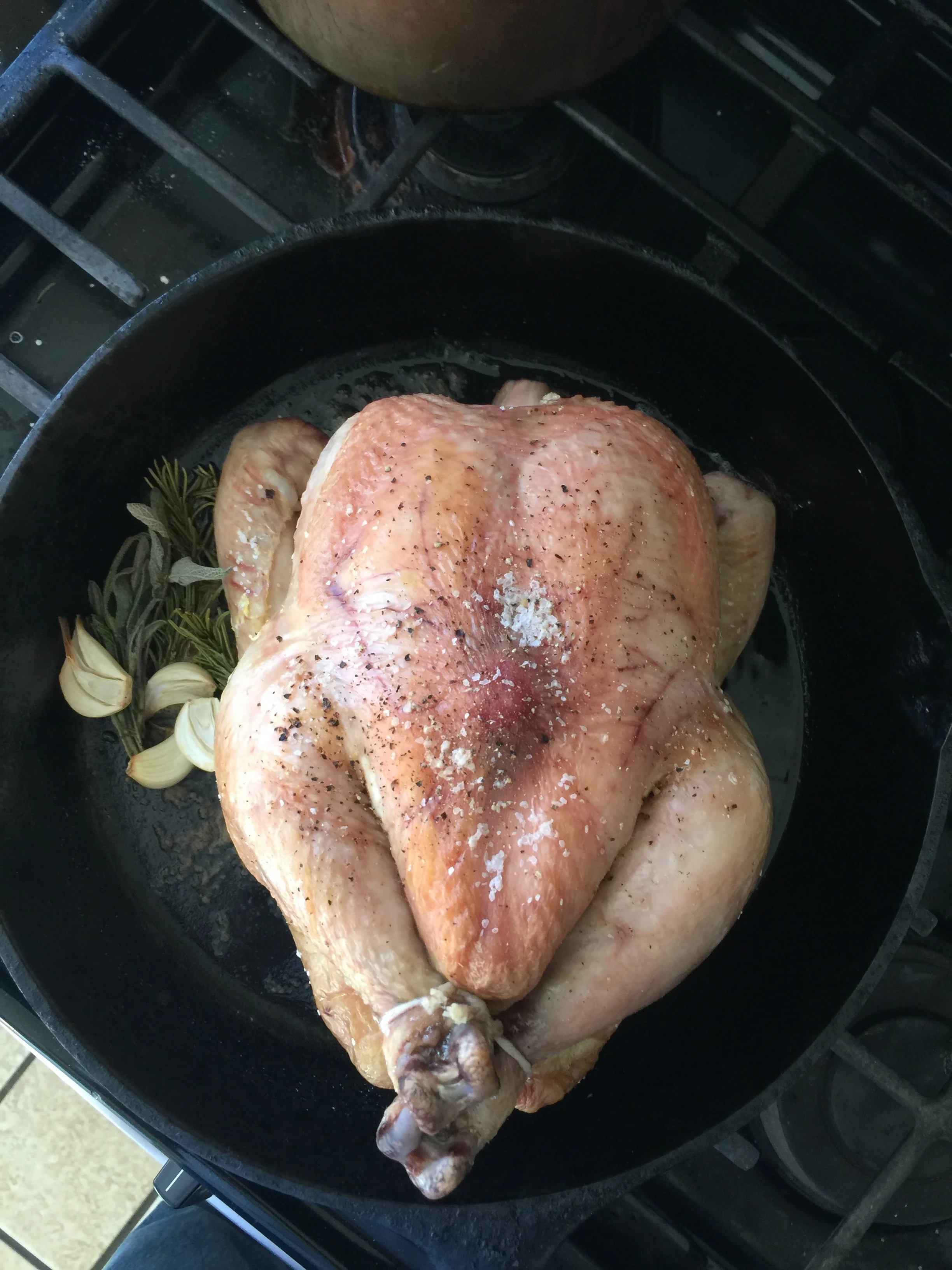
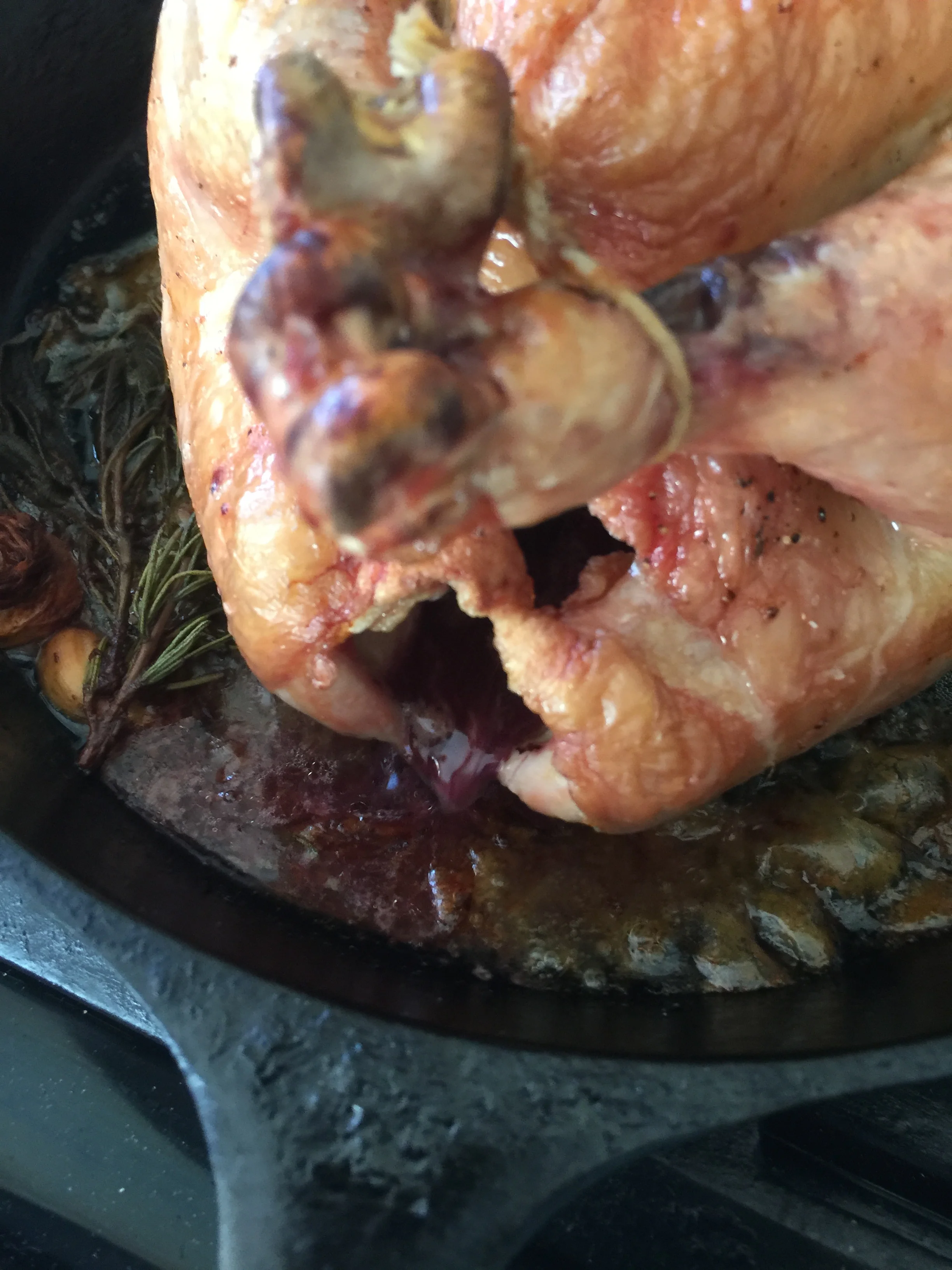
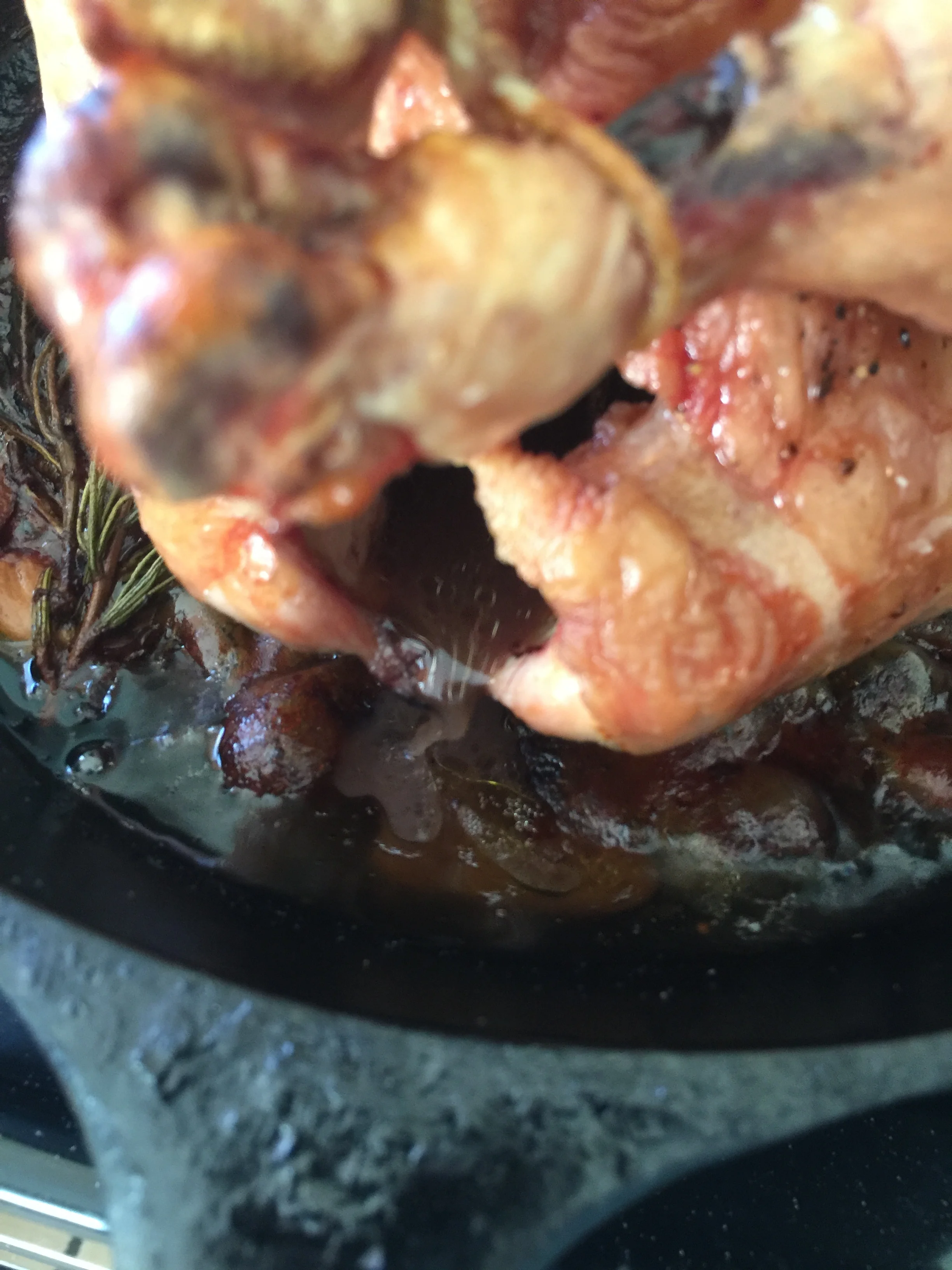
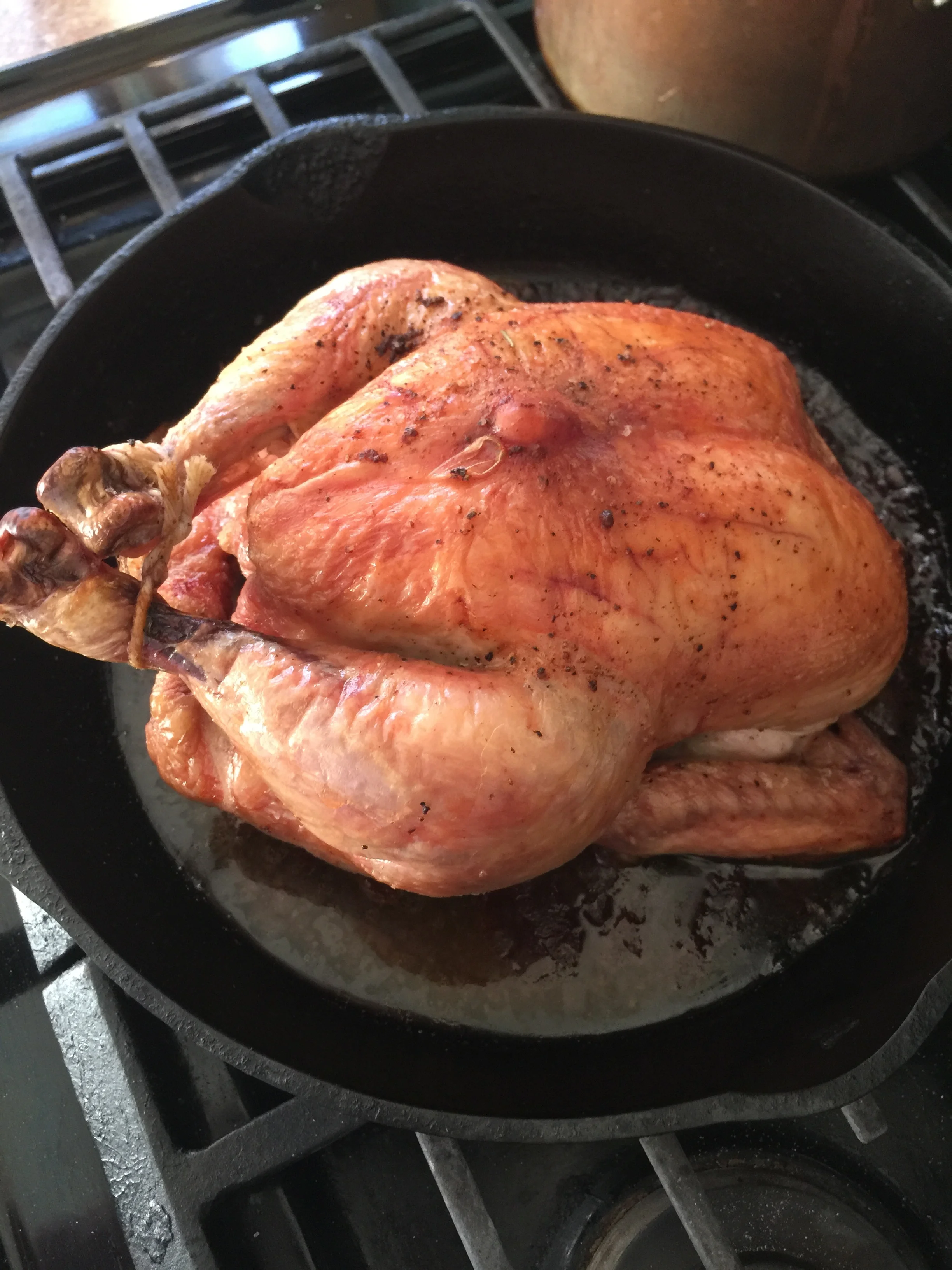
For the bird-
Ingredients:
1 3-5# pastured chicken
2 sprigs of rosemary
2 sprigs of sage
2 cloves garlic
2 Tbl butter
salt and pepper
Directions:
Preheat the oven to 435F, and place the rack in the center. Rinse the bird, and pat it dry (a dry skin will brow more evenly, and be crisper). Coat all sides (including the inside) of the bird with salt and pepper. Fold the wing tips behind the back, and place the bird in a cast iron pan. Tie the legs together with kitchen string (this allows the bird to cook at an even rate, and prevents your finished product from looking like its visiting a gynecologist). Add the herbs, garlic, and butter to the pan, and set it in the oven. Bake for 30 minutes, undisturbed. At this point, the skin has begun to brown. Turn the heat down to 375F, and baste the bird with the pan drippings. Every twenty minutes, baste the bird. Around an hour after turning the heat down, start checking the character of the juices pooling in the cavity of the chicken. Tilt the pan such that they flow out of the bird. At first, they will be opaque and red. Once these have poured into the pan, do not baste, as coagulated proteins will mar your presentation. Check the bird every ten minutes, or so, until these juices run clear. That’s how you know your chicken is done, all the way to the thighbone, but not too dry. Remove the pan from the oven, and free the bird from the pan with a metal spatula. Lift it from the pan with tongs, taking care to tilt it so that all the juices drain into the pan. Let it rest on a cutting board as you make gravy.
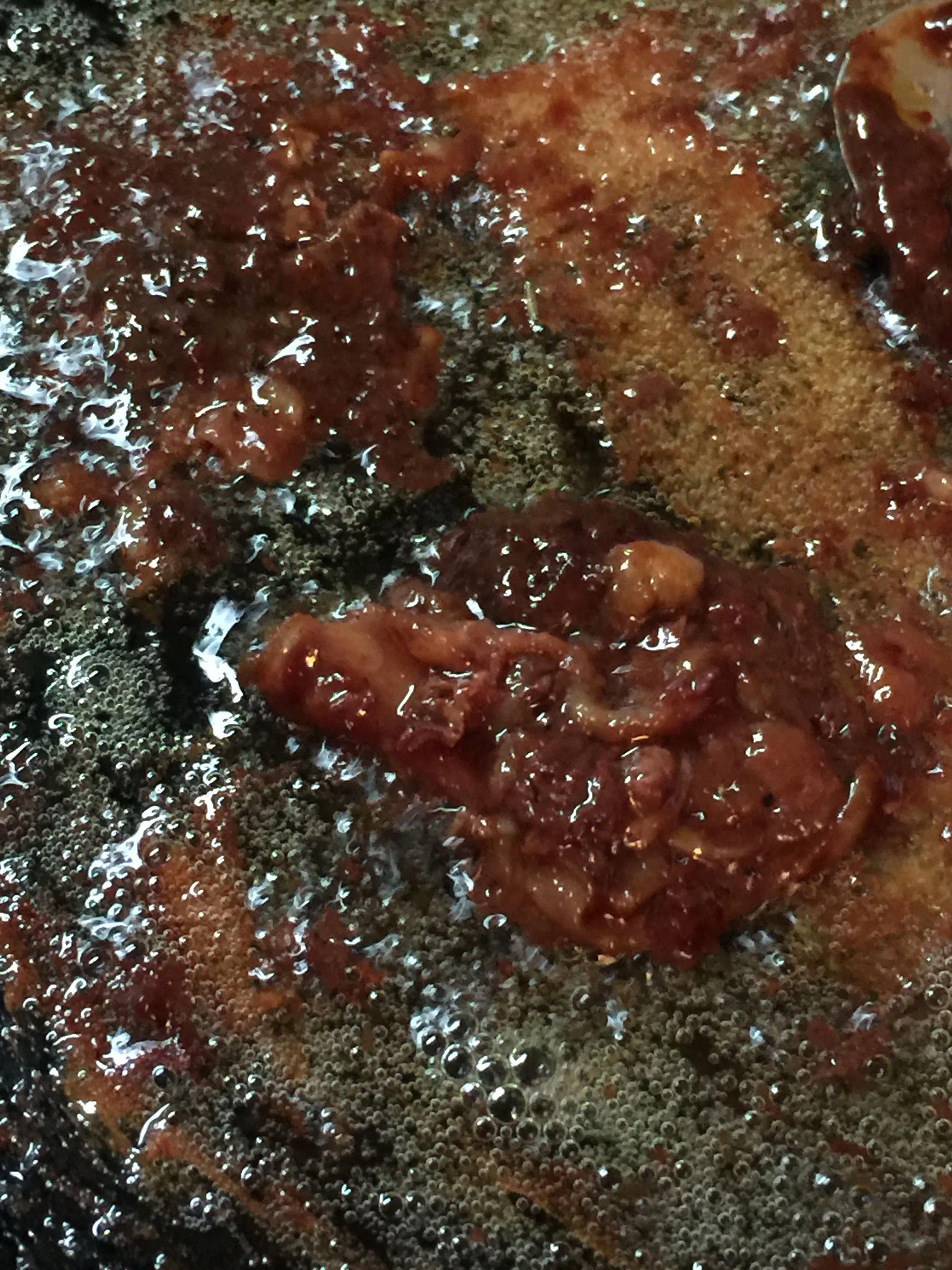
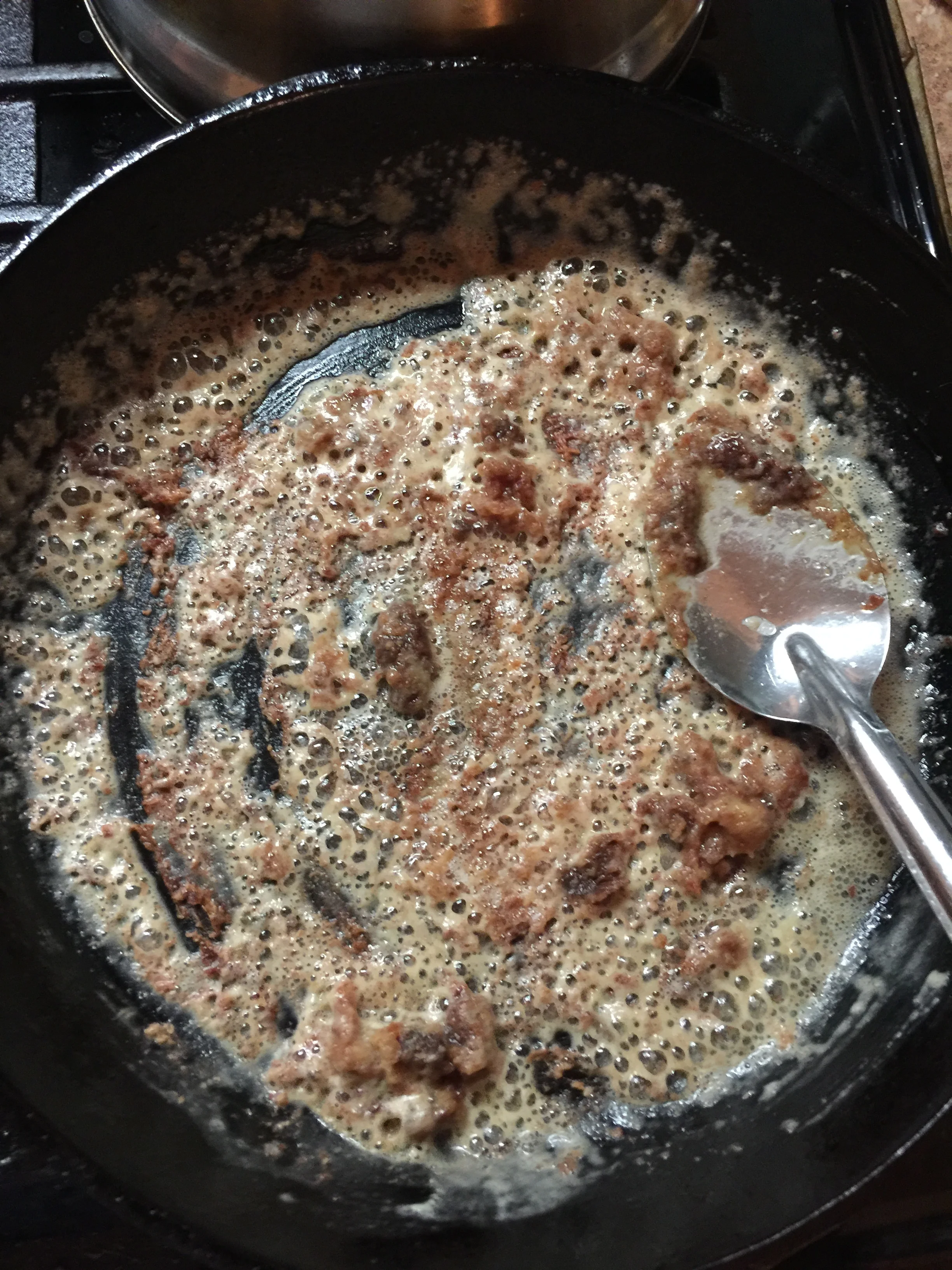
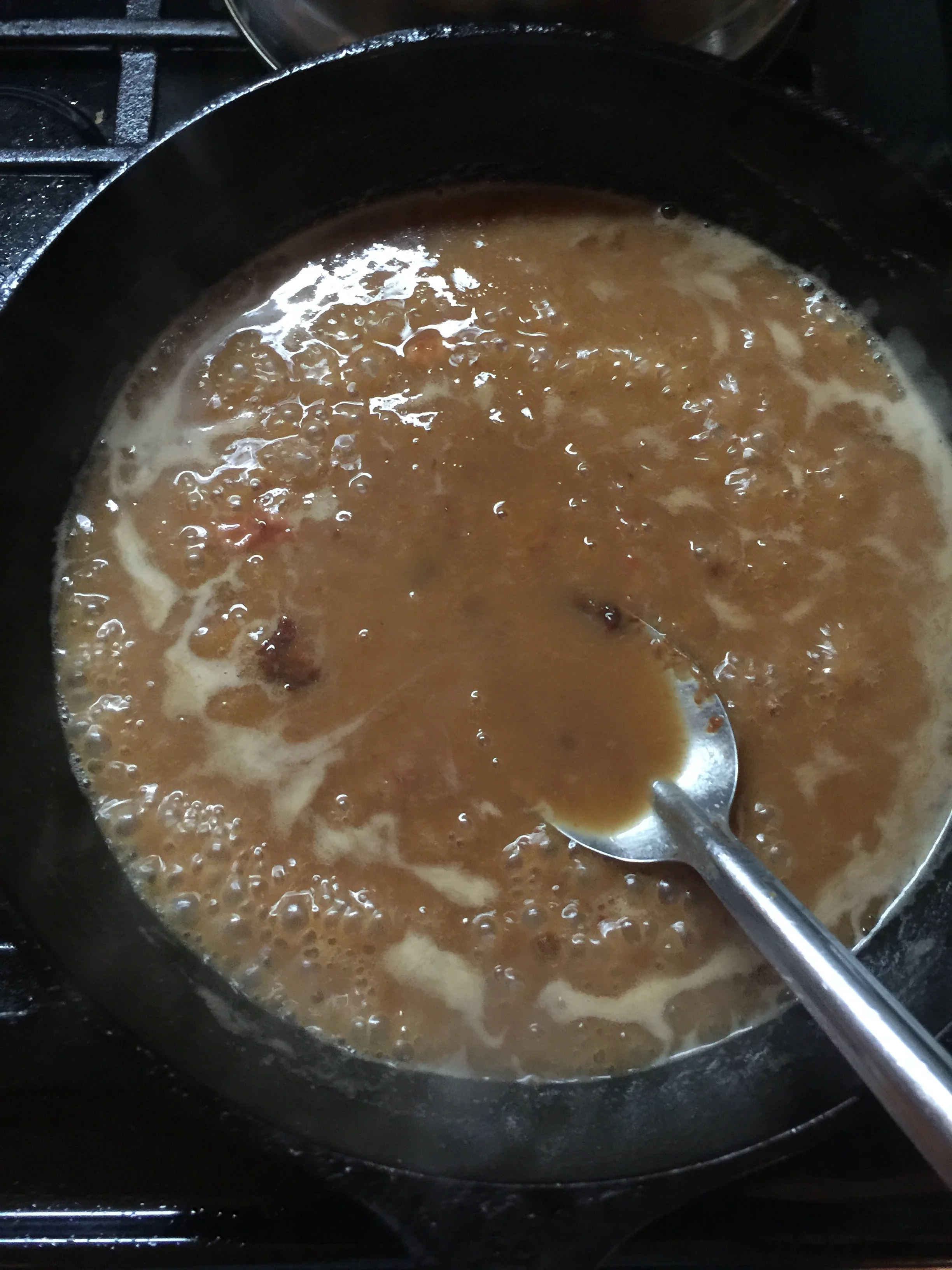
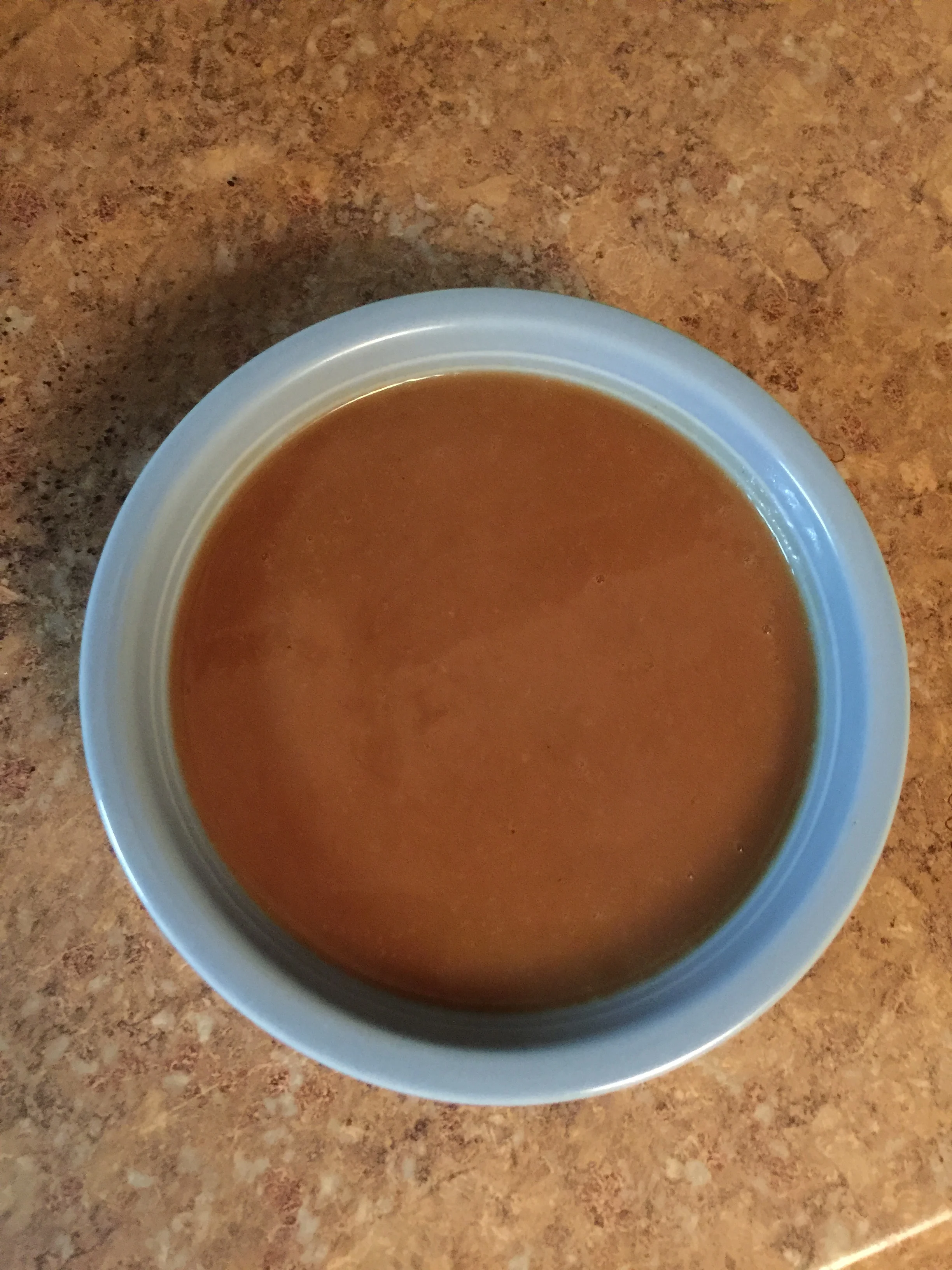
For the gravy-
Ingredients:
½ cup organic white flour
3 cups chicken stock
(optional) Brandy or white wine
Directions:
Remove and discard the herbs and garlic. They have already flavored the fat in the pan. Put the pan on a low flame. Any water left in the drippings is your enemy. The production of lumpy gravy does not result from failure to use a whisk, but rather from failure to remove moisture before adding flour, or failure to reintroduce liquid at the opposite temperature of the roux. Roux, in general, is cooked butter and flour at equal proportions. More fundamentally, it is fat and flour. Since we have such fabulous fat, rendered from this bird, our roux becomes the vehicle for most of the flavor. Let the pan drippings cook while you scrape the pan with a metal spatula. The caramelized halo left by our bird is beyond chicken candy. Spoon a dab out, let it cool, then taste it. Go pick up your socks, as they have been blown off, and keep stirring. When all of the moisture has evaporated from the pan, you will notice the bubbles get smaller, and most of the spattering subside. Add the flour, and stir with the spatula until combined. Continue cooking until the color of the flour just begins to brown. Since the roux is hot, we will add cool stock. Hot stock could cause the roux to poach into dumplings. If you want to add another dimension to your gravy, now is the time to add that splash of booze. Stir (still with the spatula) until smooth. Increase the heat to medium. As the gravy comes to a boil, the starch in the flour will absorb liquid, thickening the sauce. Thickness can be adjusted with the addition of more stock, or water, if desired. Gently stir the gravy as it comes to a boil. Once a boil has been achieved, kill the heat, and give it a taste. Add salt and pepper, if desired, but not so much as to overpower the finer flavors. At this point, you may strain the bits of browned drippings from the gravy, or leave them in as bursts of flavor.
And there you have it! This chicken is moist, with a crispy, flavor-packed skin. The gravy is mind-boggling. Take care when carving not to lose the crispness of the skin by laying it in the moisture that pools on your cutting board. Leave a comment, and let me know how it works out, for you.
The products below are Amazon Affiliate links. If you buy through them, I receive a small commission with no added cost to you.


